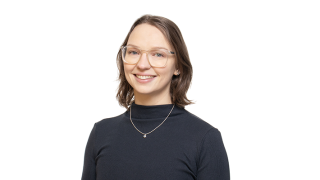Professor Markus Kortelainen of the University of Jyväskylä is a leading expert of theoretical nuclear physics

In theoretical nuclear physics, researchers aim to understand the structure and reactions of atomic nuclei, as well as the fundamental interactions that govern them. The research is based on mathematical models and theories, such as density functional theory, which are used to describe the complex phenomena of nuclear structure as accurately as possible. Understanding nuclear structure is connected to many other physical processes, such as the synthesis of elements in stars.
“Theoretical nuclear physics combines in-depth mathematical thinking with the understanding of basic natural phenomena,” says Professor Markus Kortelainen. “In addition, the theoretical approach offers a chance to model and predict phenomena that cannot be directly observed experimentally. It’s precisely this understanding of the invisible world that fascinates me so deeply.”
International cooperation advances nuclear research
Professor Kortelainen is a leading expert in theoretical nuclear structure physics, and this field of research is not pursued elsewhere in Finland. He is therefore extensively engaged in international research cooperation. Current cooperation involves especially research groups from the University of York (UK) and the University of Lyon (France).
“When researchers from different backgrounds meet, new ideas and cooperation opportunities emerge,” says Kortelainen. “A diverse scientific community enriches thinking and helps to see research goals on a broader scale.”
Physics and natural phenomena have fascinated Kortelainen since his youth. He comes originally from Northern Savo and ended up studying Physics at the University of Jyväskylä. After completing his master’s degree, he continued postgraduate studies working on his doctoral dissertation and earned his doctoral degree in 2006. A little later, he did research for three years at the University of Tennessee (USA) and at Oak Ridge National Laboratory, before returning to JYU. In 2022, the University of Jyväskylä awarded the Scientific Breakthrough Prize to Kortelainen and Staff Scientist Mikael Reponen from the Department of Physics. Kortelainen was responsible for the theoretical part of their study.
“We tested the predictions of best nuclear models against experimental measurements with the nucleus of Ag-96,” says Kortelainen. “Even though no straightforward practical applications of this breakthrough can be identified immediately, the new finding does give us researchers better insight into the properties of atoms and subatomic particles. The findings also resulted in an article published in the scientific journal Nature Communications.”
Theorist’s work is more than grinding alone
Kortelainen finds that the best thing in nuclear research is discovering new things. Theorist’s work involves thinking at one’s own desk, performing calculations, constructing models, as well as discussing and brainstorming with colleagues.
“Sometimes there are moments when I feel that nothing is progressing,” explains Kortelainen. “Then I switch over to some other tasks for a while. Surprisingly enough, it is often at that moment that a solution comes to me. It reminds me of the reason why research is so rewarding. Not because everything is clear right away, but because eventually something new and meaningful is accomplished.”
In addition, we collaborate with experimental nuclear physicists. Experimental nuclear physics involves measurements and tests, such as studying nuclear reactions in particle accelerators, in order to confirm or test theoretical models.
“Although a theorist is often working on models and calculations, real progress is made when theory meets experimental reality,” says Kortelainen. “Cooperation provides new perspectives, tests hypotheses, and helps develop more precise models.”






